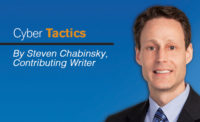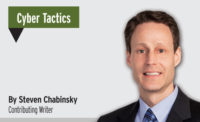When it comes to changing the cyber security landscape for the better, there are a number of people, companies, agencies and associations driving both the policy debate and the solution set. This year, however, one group stands out from the rest for its sustained capacity to bring about broad change, asserting its influence with a rare combination of intellectual capital, quiet leadership, meaningful public-private outreach, global liaison, inquisitiveness and modesty. That group is the Information Technology Laboratory (ITL) staff at the National Institute of Standards and Technology (NIST).
Although NIST has no regulatory authority, the standards it develops often are voluntarily adopted or even mandated by others. A wide-range of centers within NIST have played a role in so many aspects of our lives that, from the time you wake up in the morning to the time you go to bed at night, it’s a safe bet you have NIST to thank for something big. Big, like improving the safety and effectiveness of any of the 10 million medical procedures that use radioactive materials. Big, like improving the accuracy of nutritional information on food labels, and developing the performance standards for smoke detectors, and ensuring – 30,000 times per second – that networked computers are synchronized.
The men and women of ITL have produced an impressive array of work that covers standards for conducting cyber risk assessments, security implementation, cloud computing platform development, cryptography, identity management and supply chain risk management, just to name a few. As a result, it was welcome news when, earlier this year, the President issued an Executive Order that chose NIST to lead the development of a framework to reduce cyber risks to critical infrastructure. Within NIST, ITL is responsible for publishing the official draft of the Cybersecurity Framework for public comment in October. At the same time, ITL’s recently established National Cybersecurity Center of Excellence is fostering innovation where technology falls short of our critical security needs.
ITL’s first rule of influence is to build consensus through meaningful collaboration. Even though ITL consists of more than 500 super-genius employees and guest researchers, that doesn’t stop them from holding workshops around the country to seek additional subject matter expertise from the public and private sectors. Their next stop is Dallas, Texas, on September 11-13th. Be forewarned though, passive observers are not encouraged. As posted on NIST’s website, “participants are asked to review posted materials prior to arrival at the Workshop and to come prepared to offer substantive input.” Collaboration is not a check-the-box exercise for ITL. They come to play, and in return ask that you do the same.
ITL’s second rule of influence is to appeal to a wide-range of audiences (and to do so with surprisingly readable documents). ITL promises that portions of the Cybersecurity Framework will be designed specifically to engage senior level executives to assess their cyber risks, understand how they are being managed, and determine how their organization’s efforts compare to existing cyber security standards, guidelines, and practices. It is essential that corporate directors and CEOs have sufficient tools to analyze cyber security strategically in the context of an organization’s overall enterprise risk management strategy. As noted by ITL, cyber security for the C-Suite must be about prioritizing and protecting the organization’s core products and services. Boardrooms are not the place, for example, to discuss a security vulnerability in a Distributed Component Object Model (DCOM) Remote Procedure Call (RPC) interface.
ITL’s third rule of influence is to be fully transparent, never downplaying residual risk or gaps in analysis. In this way, ITL ensures educated decisions are made while encouraging a continued focus on areas that need improvement. Consider the fact that, under the recent Executive Order, DHS is responsible for coordinating a set of incentives to promote the voluntary adoption of NIST’s Cybersecurity Framework. Intuitively, the primary incentive a company would need to adopt the Framework is evidence that it works. However, that’s easier said than done. Many have questioned, myself included, the point at which vulnerability mitigation (passive defense) results in diminishing or even negative returns on investment. After all, persistent adversaries consistently find ways to beat even the most sophisticated, well-resourced security programs. ITL highlighted this issue, stating that comments regarding “the scarcity of helpful metrics for an organization’s cybersecurity effectiveness” would be particularly useful. What do you think? Let’s say a company could spend enough money to implement a framework that would block daily intrusion attempts 999 out of every 1,000 times, but the remaining attempt gets through unnoticed. Should that program be considered effective (having a 99.9-percent success rate), or is the end result (a large investment followed by root compromise) all that matters?
There is no doubt that cybersecurity is a challenge of monumental proportion. We are fortunate to have great people working to address it. As a prominent Senator recently said, “NIST is a jewel of the federal government and it’s the right organization to guide this very important work.” Congratulations to the ITL staff, and thank you for your service.
About the Columnist:
Steven Chabinsky is Chief Risk Officer and Senior Vice President of Legal Affairs for cyber security technology innovator CrowdStrike. He previously served as Deputy Assistant Director of the FBI’s Cyber Division, and he was honored last year by Security as one the “Most Influential People in Security.”




